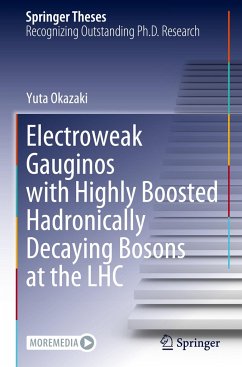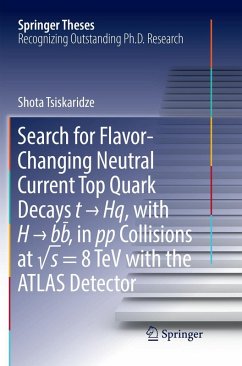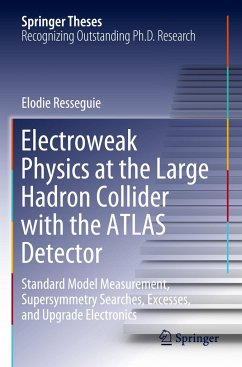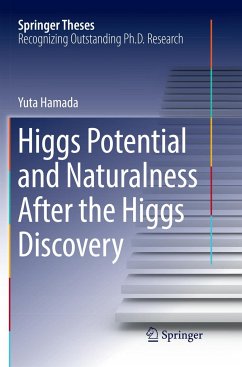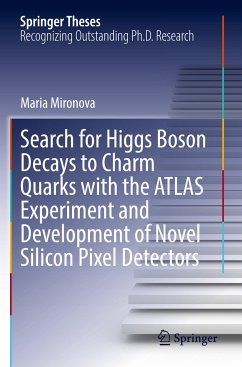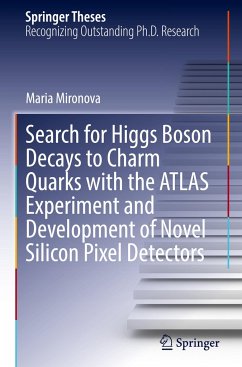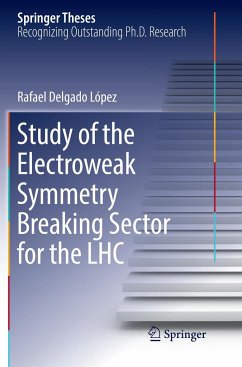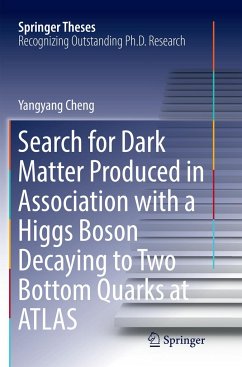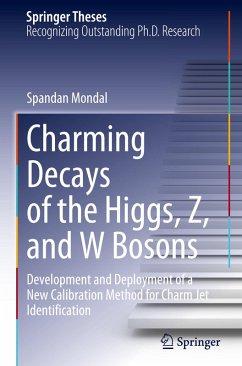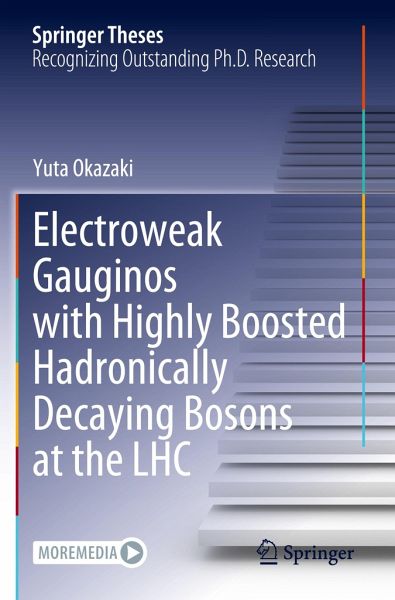
Electroweak Gauginos with Highly Boosted Hadronically Decaying Bosons at the LHC
Versandkostenfrei!
Versandfertig in 6-10 Tagen
129,99 €
inkl. MwSt.
Weitere Ausgaben:

PAYBACK Punkte
65 °P sammeln!
Supersymmetry (SUSY) introduces superpartners of the Standard Model (SM) particles. If their masses are typically O(100 GeV) - O(TeV), a lightest neutralino can be a candidate for the dark matter, and the problem is solved by canceling the correction of the Higgs boson mass. Further, SUSY can explain the experimental result of the muon magnetic moment (g-2).This book presents a search for electroweakinos-the superpartners of the SM electroweak bosons-such as charginos and neutralinos using data at the LHC collected by the ATLAS detector. Pair-produced electroweakinos decay into the light ones ...
Supersymmetry (SUSY) introduces superpartners of the Standard Model (SM) particles. If their masses are typically O(100 GeV) - O(TeV), a lightest neutralino can be a candidate for the dark matter, and the problem is solved by canceling the correction of the Higgs boson mass. Further, SUSY can explain the experimental result of the muon magnetic moment (g-2).
This book presents a search for electroweakinos-the superpartners of the SM electroweak bosons-such as charginos and neutralinos using data at the LHC collected by the ATLAS detector. Pair-produced electroweakinos decay into the light ones and SM bosons (W/Z/h), and with the large mass difference between the heavy and light electroweakinos, the SM bosons have high momenta. In a fully hadronic final state, quarks decayed from the bosons are collimated, and can consequently be reconstructed as a single large-radius jet.
This search has three advantages. The first is a statistical benefit by large branching ratios of the SM bosons. The second is to use characteristic signatures-the mass and substructure-of jets to identify as the SM bosons. The last is a small dependency on the signal model by targeting all the SM bosons. Thanks to them, the sensitivity is significantly improved compared to the previous analyses.
Exclusion limits at the 95% confidence level on the heavy electroweakino mass parameter are set as a function of the light electroweakino mass parameter. They are set on wino or higgsino production models with various assumptions, such as the branching ratio of their decaying and the type of lightest SUSY particle. These limits are the most stringent limits. Besides, this book provides the most stringent constraints on SUSY scenarios motivated by the dark matter, the muon g-2 anomaly, and the naturalness.
This book presents a search for electroweakinos-the superpartners of the SM electroweak bosons-such as charginos and neutralinos using data at the LHC collected by the ATLAS detector. Pair-produced electroweakinos decay into the light ones and SM bosons (W/Z/h), and with the large mass difference between the heavy and light electroweakinos, the SM bosons have high momenta. In a fully hadronic final state, quarks decayed from the bosons are collimated, and can consequently be reconstructed as a single large-radius jet.
This search has three advantages. The first is a statistical benefit by large branching ratios of the SM bosons. The second is to use characteristic signatures-the mass and substructure-of jets to identify as the SM bosons. The last is a small dependency on the signal model by targeting all the SM bosons. Thanks to them, the sensitivity is significantly improved compared to the previous analyses.
Exclusion limits at the 95% confidence level on the heavy electroweakino mass parameter are set as a function of the light electroweakino mass parameter. They are set on wino or higgsino production models with various assumptions, such as the branching ratio of their decaying and the type of lightest SUSY particle. These limits are the most stringent limits. Besides, this book provides the most stringent constraints on SUSY scenarios motivated by the dark matter, the muon g-2 anomaly, and the naturalness.



